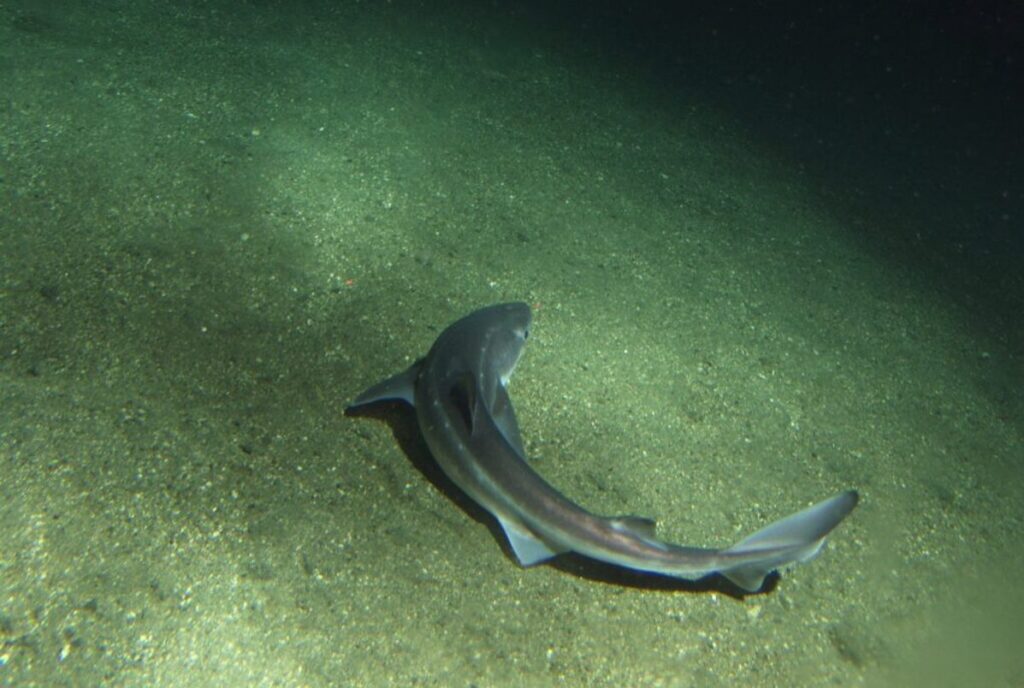Early July means a time of national celebration. Sure, there’s the Fourth of July, but it’s also time for Shark Week, when we humans scare ourselves with stories about megalodons and shark tornadoes. This year marks the 37th annual must-see, week-long TV viewfest hosted by the Discovery channel. Also, it marks the 50th anniversary of Jaws, the film perhaps most responsible for bringing sharks into our collective imagination, and striking terror into households across the country.
But not all sharks are scary. In fact, these oft-maligned fish are better thought of as friendly neighbors than foes, since most pose minimal danger to humans*. Do you know these common bay sharks?
Leopard Shark

Triakis semifasciata
Size at maturity: 3.9–4.9 feet long
Distinguished by its gray and brown spots on its dorsal side — the pattern is like a fingerprint, unique to each shark.
Broadnose sevengill shark

Notorynchus cepedianus
Size at maturity: 7.2 feet for females, 4.9 feet for males
This is the bay’s largest shark species (besides the great white, which sometimes ventures into the bay, albeit rarely). As the name suggests, this shark has a broad nose and seven gills. Most other sharks have five gills.
Brown smoothhound shark
Mustelus henlei
Size at maturity: 27.6 inches for females, 22.4–25.6 inches for males
A small, reddish-brown shark that’s commonly caught by fishers at California piers.
Pacific spiny dogfish

Squalus suckleyi
Size at maturity: 3.2–4.3 feet long
Possesses two venomous spines in front of each dorsal fin. This shark used to be considered the same species as its southern Pacific and Atlantic counterpart, Squalus acanthias, but was deemed a separate species in 2010.
*Unless you eat them! Shark meat contains high levels of mercury.

